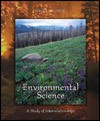 |
1 |  | 
The EPA defines hazardous substances as having one or more of the following characteristics: ignitability, corrosiveness, reactivity, or toxicity. |
|  | A) | True |
|  | B) | False |
 |
 |
2 |  | 
A substance that is poisonous to humans or other organisms by interfering with normal body physiology is called a |
|  | A) | hazardous substance. |
|  | B) | toxic substance. |
|  | C) | hazardous waste. |
|  | D) | lethal dose. |
|  | E) | none of the above |
 |
 |
3 |  | 
Hazardous wastes are regulated in the United States under which environmental regulatory act? |
|  | A) | Clean Water Act (CWA) |
|  | B) | Clean Air Act (CAA) |
|  | C) | Hazardous Waste Regulation Act (HWRA) |
|  | D) | Resource Conservation and Recovery Act (RCRA) |
|  | E) | none of the above |
 |
 |
4 |  | 
In the industrialized countries of Europe and North America, chemical and petrochemical industries produce nearly 70% of all hazardous wastes. |
|  | A) | True |
|  | B) | False |
 |
 |
5 |  | 
During a toxicology study, the highest level of exposure at which none of the test animals is affected is called the |
|  | A) | LD50. |
|  | B) | threshold level. |
|  | C) | safe level. |
|  | D) | acute level. |
|  | E) | chronic level. |
 |
 |
6 |  | 
What do toxicologists call the exposure to small doses of a particular chemical over long periods of time, like our exposure to lead in paint and gasoline? |
|  | A) | chronic exposure |
|  | B) | acute exposure |
|  | C) | renewed exposure |
|  | D) | non-persistent exposure |
|  | E) | none of the above |
 |
 |
7 |  | 
Regulations for persistent chemicals, like PCBs, tend to emphasize the importance of chronic exposure, while regulations for non-persistent chemicals, like pesticides, tend to emphasize the importance of acute exposure. |
|  | A) | True |
|  | B) | False |
 |
 |
8 |  | 
The most serious environmental effect posed by hazardous wastes is |
|  | A) | air pollution. |
|  | B) | contamination of groundwater. |
|  | C) | increased use of land for landfills. |
|  | D) | destruction of habitat. |
|  | E) | none of the above. |
 |
 |
9 |  | 
The federal program that deals with the cleanup of hazardous waste sites is popularly called |
|  | A) | National Priority List. |
|  | B) | Superfund. |
|  | C) | Toxic Waste Reduction and Removal. |
|  | D) | United States Office of Technology Assessment. |
|  | E) | none of the above. |
 |
 |
10 |  | 
The Environmental Protection Agency (EPA) estimates that there are about 2500 hazardous waste sites in the United States that are eligible for placement on the National Priority List for cleanup at an estimated cost of nearly $30 billion. |
|  | A) | True |
|  | B) | False |
 |
 |
11 |  | 
Due to increases in population and the United States economy, the EPA reported that hazardous waste production has increased dramatically since the early 1990s. |
|  | A) | True |
|  | B) | False |
 |
 |
12 |  | 
Of the following ways to manage hazardous waste, which would the EPA emphasize first through its pollution-prevention hierarchy? |
|  | A) | recycling |
|  | B) | pollution prevention |
|  | C) | land disposal |
|  | D) | incineration |
|  | E) | none of the above |
 |
 |
13 |  | 
If waste oil from automobiles is burned in power plants, this is an example of |
|  | A) | treatment of wastes. |
|  | B) | pollution prevention. |
|  | C) | waste recycling. |
|  | D) | land disposal. |
|  | E) | none of the above. |
 |
 |
14 |  | 
Despite the EPA's emphasis on pollution prevention, over 80% of the hazardous wastes in North America, Europe, and Japan are disposed of on land or through water treatment plants. |
|  | A) | True |
|  | B) | False |
 |



 2002 McGraw-Hill Higher Education
2002 McGraw-Hill Higher Education